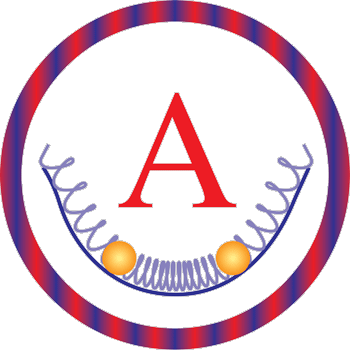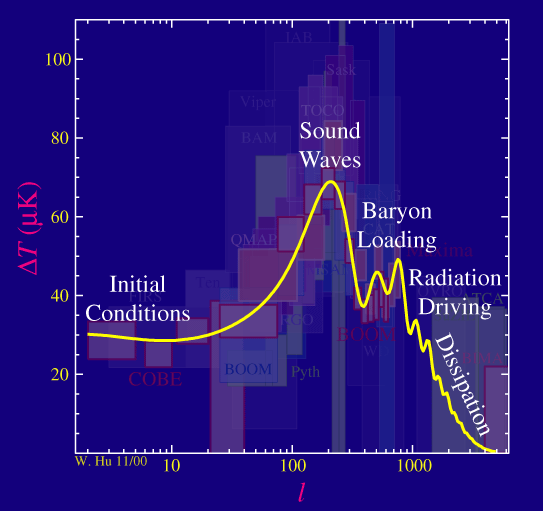Ringing in the New Cosmology


According to the theory of the Big Bang, the universe started hot and dense and then expanded and cooled. In the hot, dense conditions of the early universe, photons were tightly glued to matter. When the universe was about 300,000 years old the temperature dropped below 3,000K allowing atomic hydrogen to form and releasing the photons. These photons, which travelled freely through the universe as it expanded and cooled, make up the cosmic microwave background (CMB) we see today. Ten to twenty billion years after the Big Bang, the CMB is a cold sea of photons with an average temperature of 2.7K (-270 C). These photons are all around us, causing about 1% of the noise on our television sets. (For a more thorough introduction to the CMB please see the sister pages: An Introduction to the Cosmic Microwave Background.)
When it was discovered in the 1960s, the CMB was found to be remarkably uniform across the sky. It was not until 1992 that the Cosmic Background Explorer (COBE) satellite discovered temperature variations (or ripples) at the level of 1 part in 100,000. Temperature maps of the CMB form a snapshot image of the universe when it was extremely young. So these ripples reflect tiny density fluctuations in the primordial soup of particles. These same density fluctuations are thought to grow by gravitational attraction into the familiar structures we see today (stars, galaxies, and clusters of galaxies). This is the gravitational instability model of structure formation.
COBE told us what the large-scale fluctuations in the background look like, but cosmologists today are more interested in the small-scale fluctuations. Astronomers divide up the sky into angular degrees, so that 90 degrees is the distance from the horizon to a point directly overhead. COBE measured temperature ripples from the 10 degree to 90 degree scale. This scale is so large that there has not been enough time for structures to evolve. Hence COBE sees the so-called initial conditions of the universe. At the degree scale, on the other hand, the process of structure formation imprints information in the ripples about conditions in the early universe.
Since the COBE discovery, many ground and balloon-based experiments have shown the ripples peak at the degree scale. What CMB experimentalists do is take a power spectrum of the temperature maps, much as you would if you wanted to measure background noise. The angular wavenumber, called a multipole l, of the power spectrum is related to the inverse of the angular scale (l=100 is approximately 1 degree). Recent experiments, noteably the Boomerang and Maxima experiments, have show that the power spectrum exhibits a sharp peak of exactly the right form to be the ringing or acoustic phenomena long awaited by cosmologists:

Soundscape: COBE measured the temperature fluctuations ΔT on the largest angular scales which correspond to multipoles as roughly l=100/angle (degrees) ~ 2-20. The current generation of experiments are measuring multipoles l>100 where the acoustic peaks are expected to dominate the scene (yellow curve). The physical landscape described in these pages begins with sound waves and proceeds through baryon loading, radiation driving, and dissipation by diffusion damping. In the background, are the measurements as of January 2001.
Such acoustic phenomena probe the conditions of the infant universe as a kind of cosmic ultrasound. These pages are devoted to exploring the implications of current and upcoming measurements of sound waves in the CMB.
With the discovery of sound waves in the CMB, we have entered a new era of precision cosmology in which we can begin to talk with certainty about the origin of structure and the content of matter and energy in the universe.